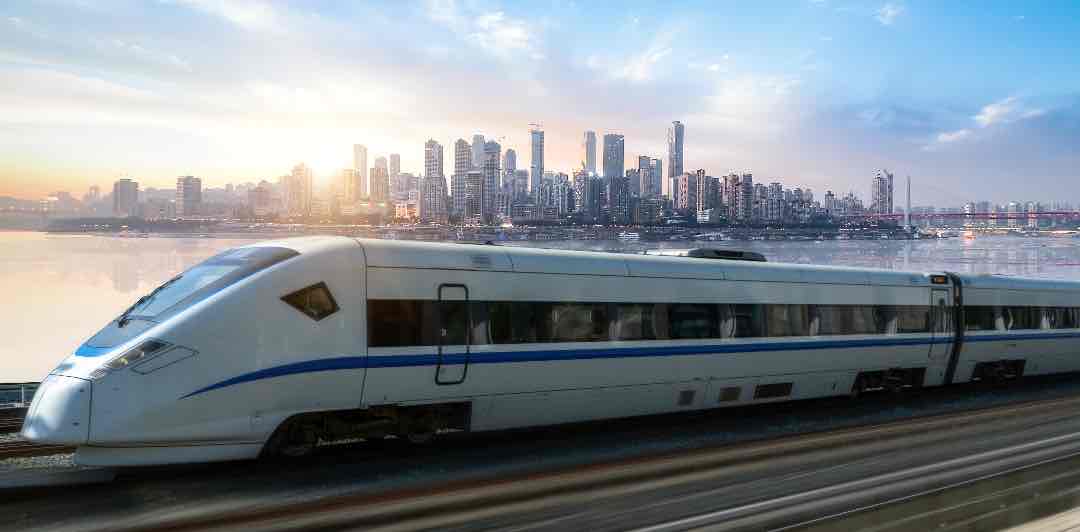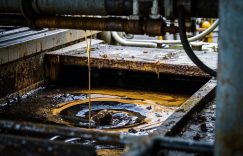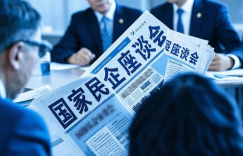
Today is New Year’s Eve, first of all, I wish you a happy Chinese New Year! Most of the students should have gone home, but some students may still be on the way, so what we are going to talk about today is the railway. And it is the promotion of China’s two east-west and north-south high-speed rail arteries.
This is undoubtedly a big deal, because we all know that a high-speed rail, especially this kind of arterial-level high-speed rail, will have a huge impact on the local economy. So which specific regions will benefit the most? Let’s discuss it together.
As usual, let’s talk about the background of this matter first. Recently, the Chongqing-Yichang High-speed Railway, that is, the high-speed railway from Yichang, Hubei to Fuling, Chongqing, has officially started construction on January 2, marking that China’s two east-west and north-south high-speed rail arteries have officially entered the stage of implementation.
The “east-west artery” here refers to the “Yanjiang High-speed Railway” that the State Council began to plan and build in 2018, with a total mileage of 2,100 kilometers. The whole journey is divided into 6 major sections, namely Shanghai to Hefei, Hefei to Wuhan, Wuhan to Yichang, Yichang to Fuling, Fuling to Chongqing, and Chongqing to Chengdu. The Chongqing-Yibin high-speed railway mentioned just now is one section of this east-west artery.
The “north-south artery” refers to the “Beijing-Shanghai High-speed Railway Line 2”, which is 1,200 kilometers long and is currently under construction. It is expected to be completed and put into use by 2027 or 2028. After completion, it will pass through Beijing, Tianjin, Cangzhou, Hebei, Binzhou, Dongying, Weifang, Rizhao, Linyi in Shandong, Xuzhou, Suqian, Huai’an, Yangzhou, Taizhou, Nantong, Suzhou in Jiangsu, and finally Shanghai.
“East-West Artery”: Yangtze River High-speed Railway
Why are these two high-speed railways at the “artery” level? How important are they? Let’s talk about them one by one.
Let’s first look at the “East-West Artery”, which is the Yangtze River High-speed Railway, which was built at a huge cost of 560 billion yuan and is considered one of the “most expensive high-speed railways” in the country. The Yangtze River High-speed Railway runs along the Yangtze River and connects the Yangtze River Economic Belt.
In the past, there were two very prominent transportation contradictions along the Yangtze River:
One contradiction is that backward transportation does not match the high-speed economic development of the Yangtze River Economic Belt. These low-speed “bottleneck” transportation sections have become an important factor restricting economic development.
The second contradiction is that because there are few railway lines along the Yangtze River, passenger and freight lines frequently compete for lines, so passenger transportation must be given priority, which makes it difficult for railway freight functions to be effectively exerted, greatly increasing social logistics costs.
Therefore, the start of construction of the Chongqing-Yibin high-speed railway in early 2025 is of great significance: First, once completed, it means that the high-speed railway network of “Shanghai-Jiangsu-Anhui-Wuhan-Chongqing-Chengdu” will be completely opened up. At that time, all high-speed railway sections will be effectively connected to become a real “Yangtze River High-speed Railway”.
Secondly, the Yangtze River High-speed Railway will fully connect the three strategic urban agglomerations of the Yangtze River Delta Metropolitan Area, the Central Urban Agglomeration, and the Chengdu-Chongqing Twin Cities Economic Circle, truly realizing the connection of the Yangtze River Economic Belt. In other words, the three major regions of East China, Central China and Southwest China are connected, the radiation power of the urban agglomeration will continue to expand, and the driving force for the economy along the river will be significantly improved.
“North-South Artery”: Beijing-Shanghai High-speed Railway Line 2
After talking about the “East-West Artery”, let’s look at the “North-South Artery”, that is, the “Beijing-Shanghai High-speed Railway Line 2”.
This is a “Beijing-Shanghai Auxiliary Channel” connecting Beijing and Shanghai and radiating the “high-speed rail depression” cities along the line. To explain, “high-speed rail depression” cities refer to cities with less or no coverage of the high-speed rail network.
The “Beijing-Shanghai Auxiliary Channel” refers to the positioning of this line, which is mainly to make up for the shortcomings of the Beijing-Shanghai High-speed Railway Main Line. This is not difficult to see from the name “Beijing-Shanghai High-speed Railway Line 2”.
Let’s first look at what are the shortcomings of the Beijing-Shanghai High-speed Railway Main Line, which has been in operation for more than ten years?
First of all, passenger pressure is increasing day by day, especially on weekends and holidays, tickets are in short supply. At present, the number of EMUs running on the Beijing-Shanghai High-speed Railway has reached 666 per day, with an annual passenger flow of 210 million people, and the shortest departure interval has even been compressed to 3.5 minutes. Obviously, the capacity has reached the ceiling, and the only way to increase the capacity is to build new lines.
Secondly, the planning of the main line of the Beijing-Shanghai High-speed Railway mainly takes care of the cities along the line with relatively higher economic development levels, such as covering 10 trillion-level economic strong cities and 6 million-population cities, but not enough care for cities with relatively backward economy and population.
Therefore, once the new “North-South Artery” of the “Beijing-Shanghai High-speed Railway Second Line” is completed, it will really benefit the cities and people in the “high-speed railway depression” along the line.
Which cities will benefit specifically?
Okay, now you know the importance of the two east-west and north-south high-speed railway arteries. Let’s focus on the question you are most concerned about. Which specific cities will benefit?
First, there is no doubt that it is the central cities and large cities.
The two new arterial high-speed rail lines will expand the radiation radius of the central city and expand the convenience of the circulation of various resources. The siphoning power of the central city, that is, the agglomeration effect on population, capital and resources, will continue to increase. Beijing, Shanghai, Suzhou, Hefei, Nanjing, Wuhan, Chengdu, Chongqing, these first-tier/new first-tier cities will benefit directly.
Second, the past “high-speed rail depression” will also usher in spring.
The greatest magic of high-speed rail is that it can greatly compress distance, improve the efficiency of people and goods flow, and create opportunities for economic development.
For example, Zhengzhou, sitting on the high-speed rail hub status of “eight horizontal and eight vertical”, has successfully revitalized the local economy and achieved rapid growth by relying on high-speed rail exchanges from east to west and north to south, and the city has a new look. On the other hand, Yangzhou missed the main line of the Beijing-Shanghai high-speed rail that year and failed to enjoy the economic dividends brought by the high-speed rail.
And this time, some of the former “high-speed rail depression” cities in Shandong, Jiangsu, Anhui, Hubei and other provinces will be directly connected to the radiation range of Beijing-Tianjin-Hebei and the Yangtze River Delta. Taking Nantong as an example, after the Beijing-Shanghai High-Speed Railway Line 2 arrives in Nantong, it can directly reach Shanghai in a “parallel” way. Both lines can reach Baoshan, Shanghai, and then from Baoshan to the terminal Pudong, Shanghai. This will greatly strengthen the economic exchanges between northern Jiangsu and Shanghai and drive the long-term development of the entire Yangtze River Delta Economic Zone.
In addition, cities such as Taizhou and Yangzhou in Jiangsu Province, Binzhou, Dongying, Weifang, Rizhao, and Linyi in Shandong, Lu’an and Jinzhai in Anhui, and Macheng and Hong’an in Hubei will all get rid of the hat of “high-speed rail depression” and have the opportunity to ride the spring breeze of high-speed rail dividends.
After all, if you want to get rich, you must first build roads.



